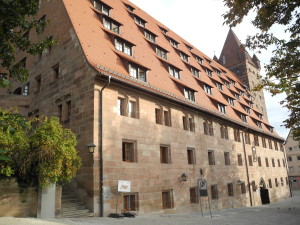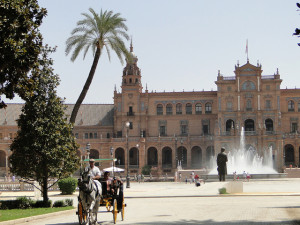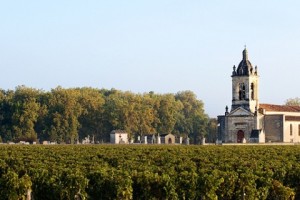Germany
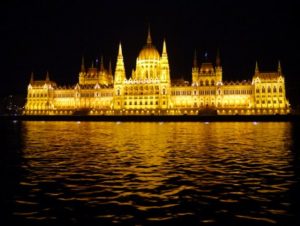
Budapest’s Parliament building is Hungary’s top must-see attraction . Photo by Clark Norton
Most of us, when we travel to another country, probably have in mind at least one “must-see” attraction., usually an iconic structure, museum, historic site, or natural wonder.
Examples might be Machu Picchu in Peru, Angkor Wat in Cambodia, the Giza Pyramids in Egypt, the Roman Colosseum in Italy, and the Parliament building in Budapest, Hungary.
Recently, TripAdvisor — which has propelled itself into the world’s leading travel site and travel data bank — released a map of Europe displaying the “one thing you must do in each country, according to tourists.” (I found it in the Huffington Post.)
For most countries, the results were pretty true to form: The Roman Colosseum in Italy; The Grand Place in Brussels, Belgium; the Rijksmuseum in Amsterdam, Netherlands; Tallinn Old Town in Estonia; the Acropolis Museum in Athens, Greece; the… Continue reading
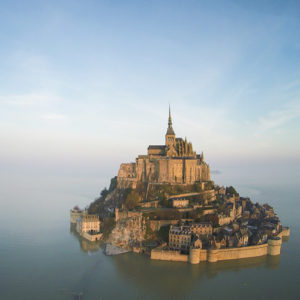
Mont-Saint-Michel is a remarkable sight as you approach. Photo from Normandy Tourist Board.
As regular readers of this blog know, I have a soft spot for off-the-beaten-track destinations.
Yes, I love Paris and Venice and London, but I also like to explore the lesser-known out-of-the-wsy places that many travelers never reach.
Once years ago, I set off by train from Paris to visit Mont-Saint-Michel, a medieval abbey off the coast of Normandy that I had read about in college in the Henry Adams’ book, Mont-Saint-Michel and Chartres.
The trip took two full days because the train connections were awful, but I made it, and didn’t regret it. It’s a dramatically situated Gothic masterpiece, rising atop a rocky island with a maze of narrow streets surrounding it.
Traditionally, Mont-Saint-Michel has only been reachable by land when the tides are out, via squishy mud flats. When the tides come in,… Continue reading
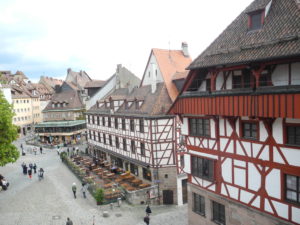
Nuremberg’s medieval city has been carefully reconstructed following Allied bombing in WWII. Photo by Clark Norton
I might never have visited Nuremberg, Germany, if it hadn’t been the starting point for a Danube River cruise last fall.
My wife, Catharine, and I arrived in Nuremberg several days early, intending to use it as a base for exploring the surrounding area, a region of Bavaria known for its charming medieval towns, rolling hills, and Autumn beer festivals.
But we ended up being so enamored of Nuremberg that we never left the city during our four-day stay there.
We were entranced by pathways leading intriguingly along ancient city walls, covered footbridges that crossed bucolic rivers and canals, flower-filled parks that attracted residents out for Sunday strolls, winding streets that unveiled tempting little restaurants and taverns, and half-timbered houses lining picturesque squares.
One square is anchored by the former home… Continue reading
When my wife and I were in Nuremberg, Germany, this past September, we stayed for four nights in a lodging that was adjoined to the Imperial Castle that sits on the highest point in the city.
It was a short stroll to the castle entrance and all the other landmarks of the old city, which has been beautifully restored after its destruction in World War II.
It was five-to-ten minute downhill walk to the Hauptmarkt, or Market Square. The Albrecht Durer Haus — where Germany’s most celebrated painter lived — is even closer. The main train station is about a mile away.
We had a sparkling clean room with a view, a private bathroom, and a gigantic German buffet breakfast — wonderful breads, cheeses, meats, fruit, yogurts, eggs, juices and coffee (including espresso drinks) — that was included in the rates.… Continue reading
The much-beloved film The Sound of Music, which was released in 1965 and won the Oscar for Best Picture that year, did most of its location shooting in and around the city of Salzburg, Austria.
It’s hard to imagine many baby boomers who don’t know the (somewhat fictionalized) story of how the musically inclined von Trapps — composed of would-be-nun-turned-nanny Maria (Julie Andrews), Baron von Trapp (Christopher Plummer), and a parcel of cute kids who could belt out catchy tunes like “Do-Re-Mi” — became a family and fled the Nazis in Austria for safe haven elsewhere.
After hiking over the mountains (in the movie, at least), they eventually made their way to the United States and became known as the Trapp Family Singers.
The gorgeous Austrian scenery, the infectious music by Rodgers and Hammerstein, Julie Andrews twirling on a mountaintop in the… Continue reading
Last of a 3-part series.
In our first post in this series, we began our quick guide to the 12 most popular European cruising rivers, starting with the Danube, Rhine, Seine, and the Volga and other Russian waterways — probably the best known of the top cruising rivers in Europe.
In our second post, we’ took a look at four more rivers (actually five rivers and one canal) ranging from France to Portugal, Germany and the Czech Republic to Sweden.
In this third post, we’ll complete the top 12 list with cruising rivers in Spain, Germany-Luxembourg, Italy, and, once again, France.
Spain’s Guadalquivir
A Guadalquivir cruise offers one of the most pleasant ways to explore Andalusia – Spain’s southernmost province and site of some of the country’s most fabled cities. The river itself, though one of… Continue reading
Part 2 of a 3-part series
In our last post, we began our quick guide to European cruising rivers, starting with the Danube, Rhine, Seine, and the Volga and other Russian waterways — probably the best known of the top 12 cruising rivers in Europe.
In this post, we’ll take a look at four more rivers — well, actually five rivers and one canal — ranging from France to Portugal, Germany and the Czech Republic to Sweden.
The Rivers of Bordeaux: the Dordogne, Garonne, and Gironde
You can get an intimate look at Bordeaux, perhaps the world’s premier red-wine-producing region, on this three-river cruise that begins in the city of Bordeaux itself. Bordeaux, situated along the Garonne River — which connects to the Bay of Biscay via the Gironde River along France’s western coast — is a treasure trove of architectural… Continue reading

